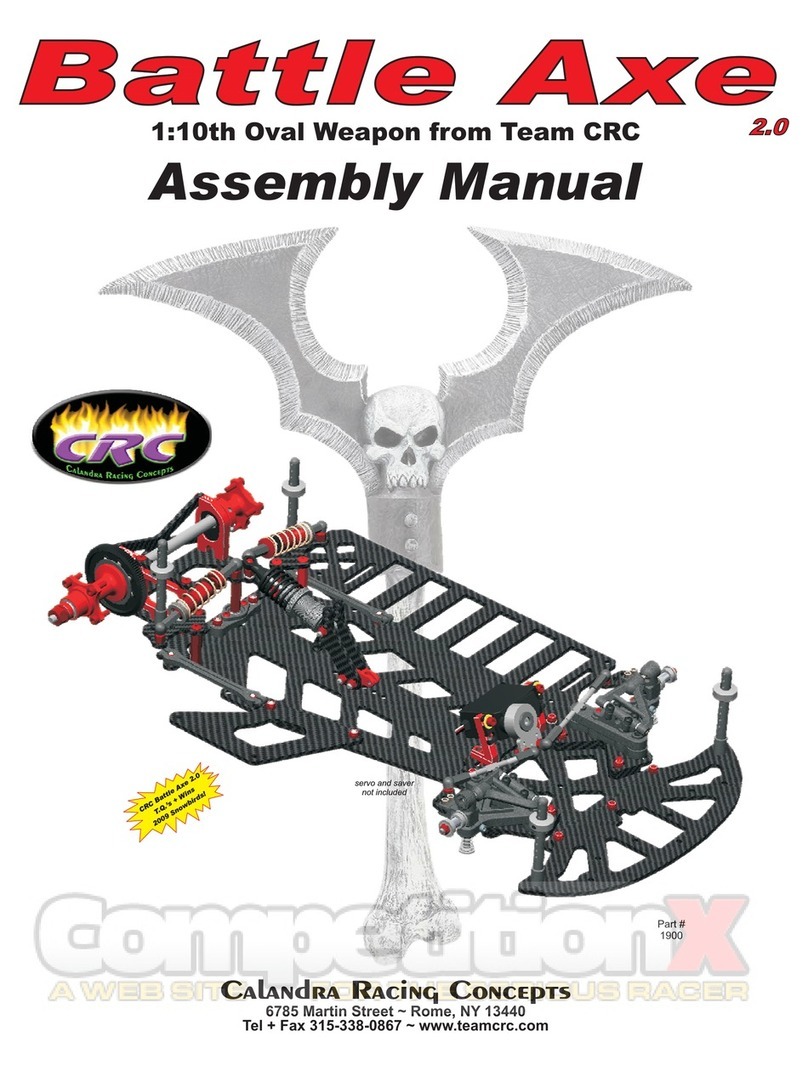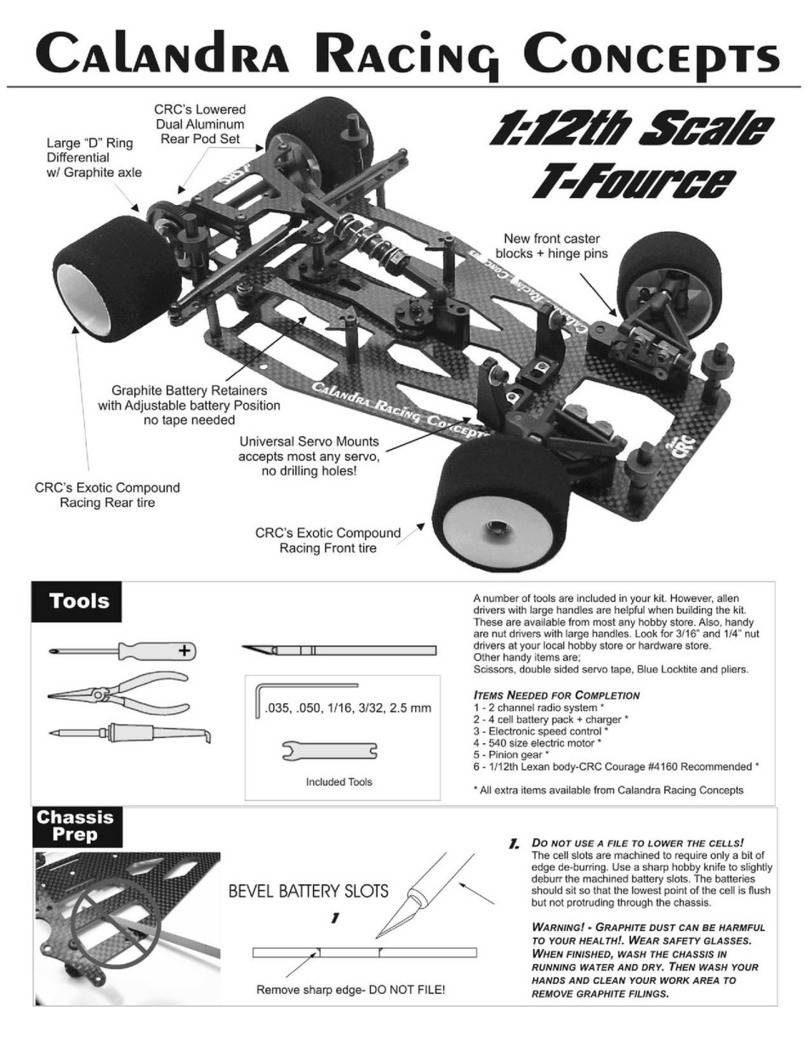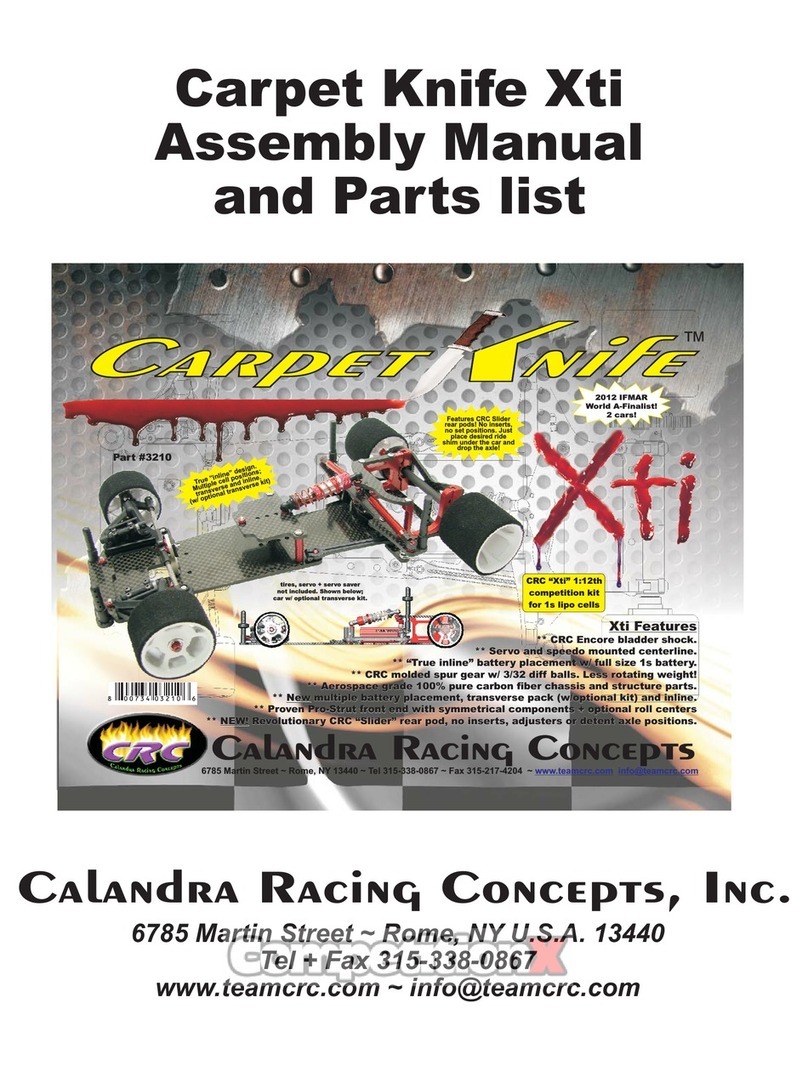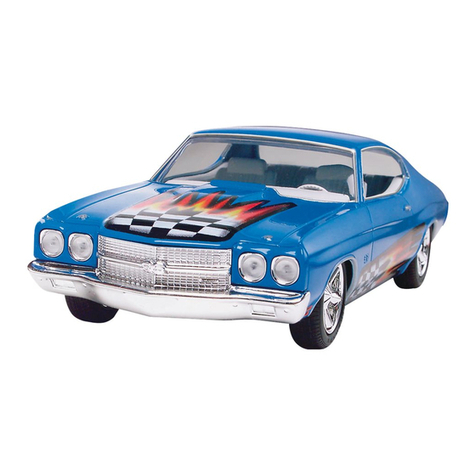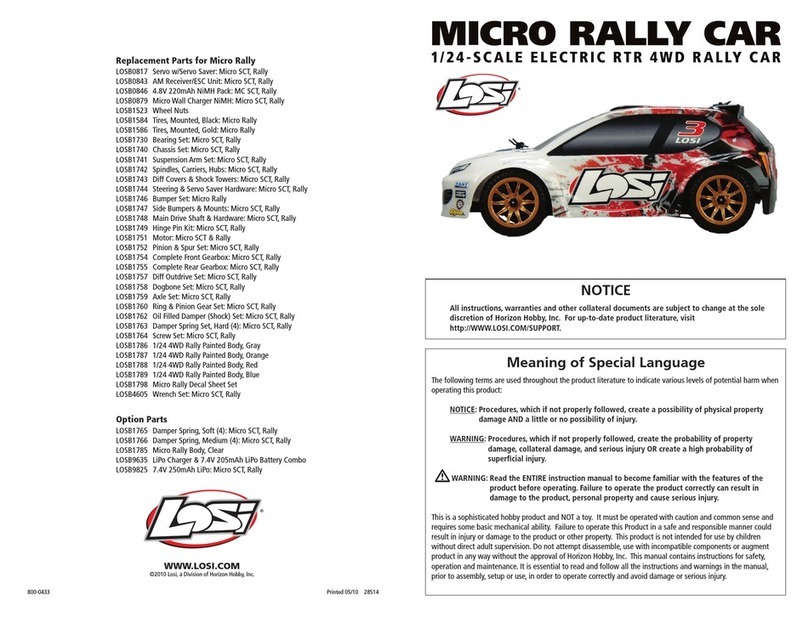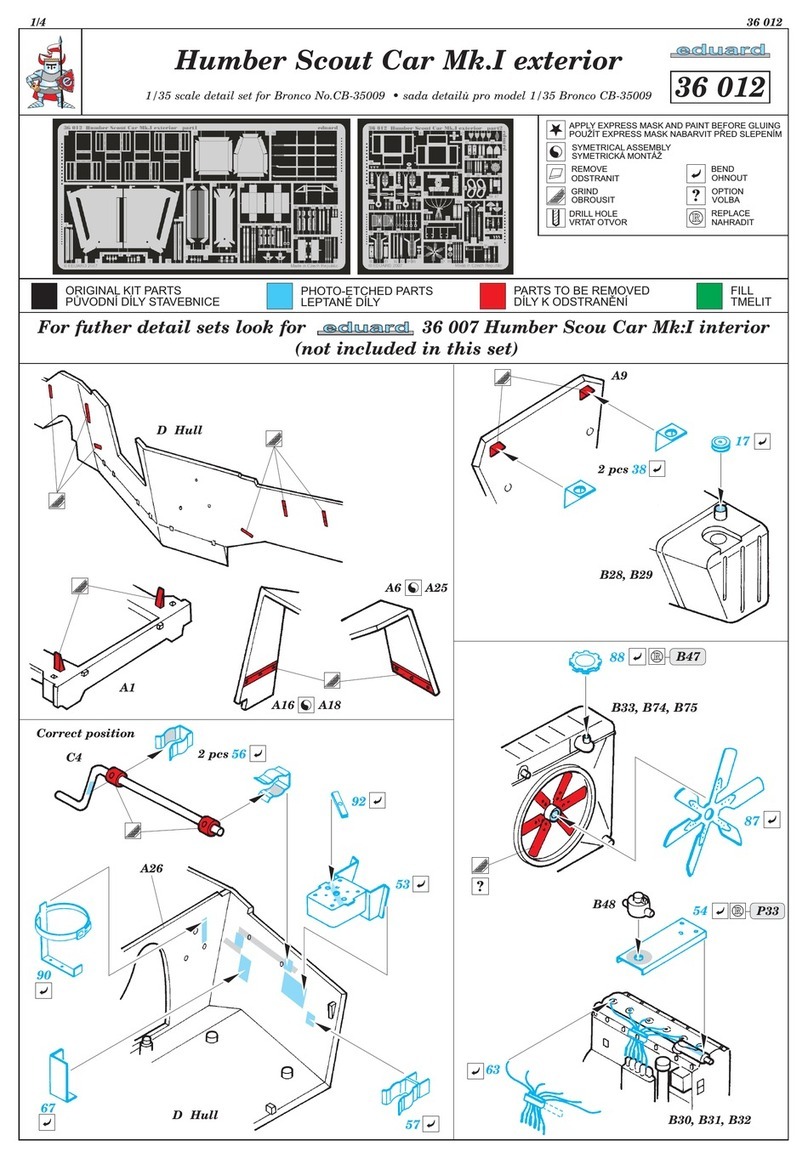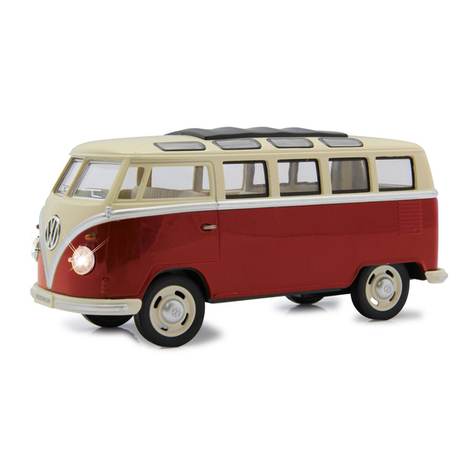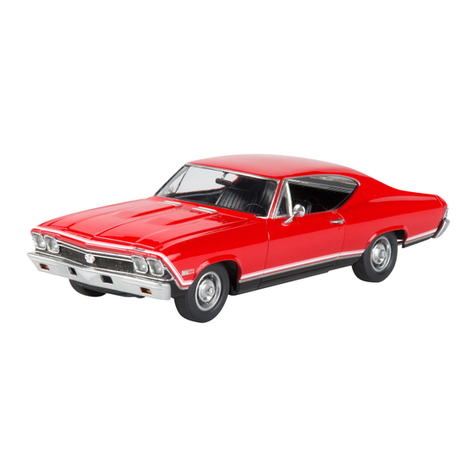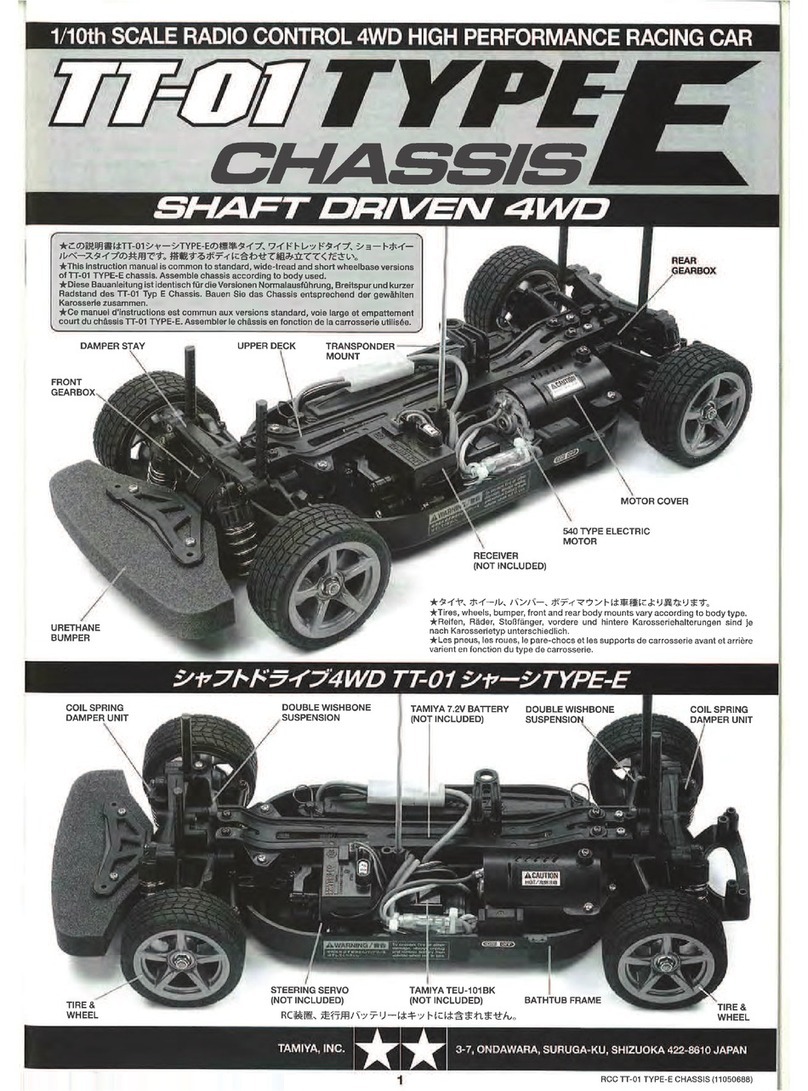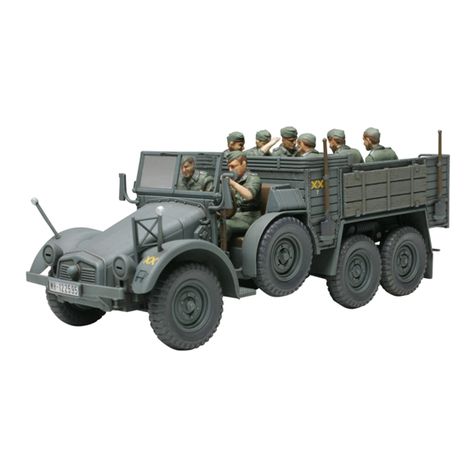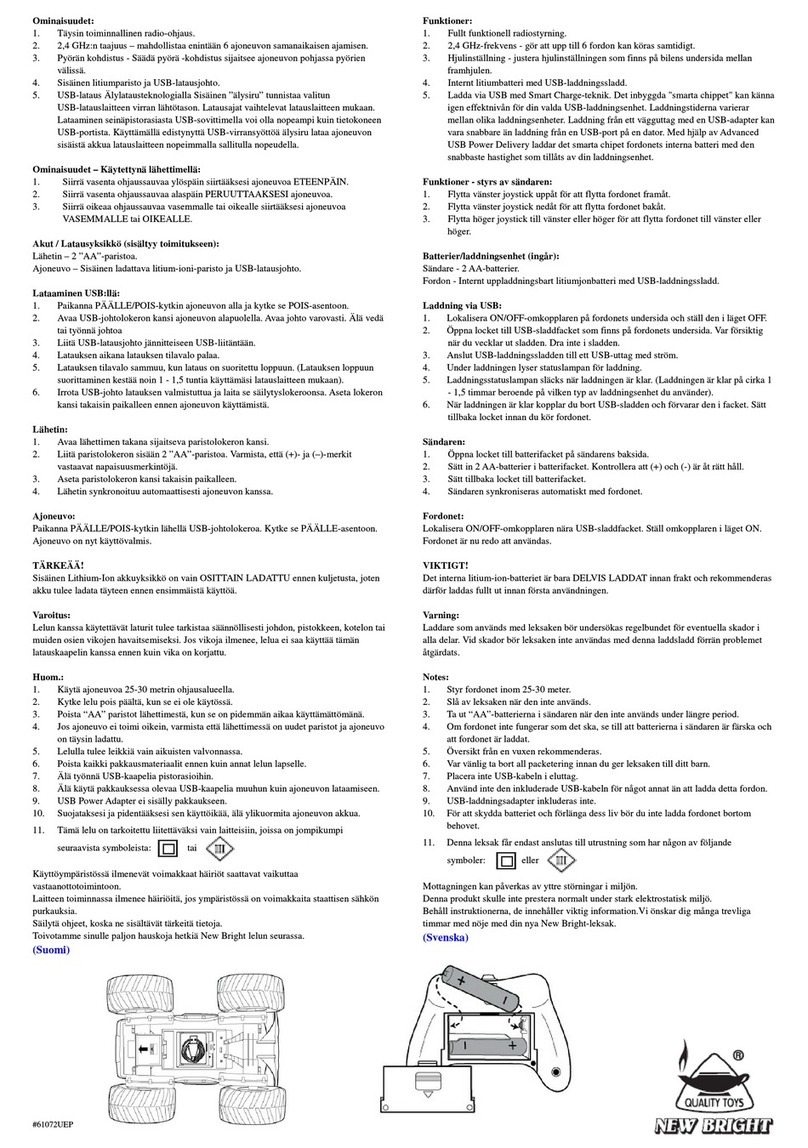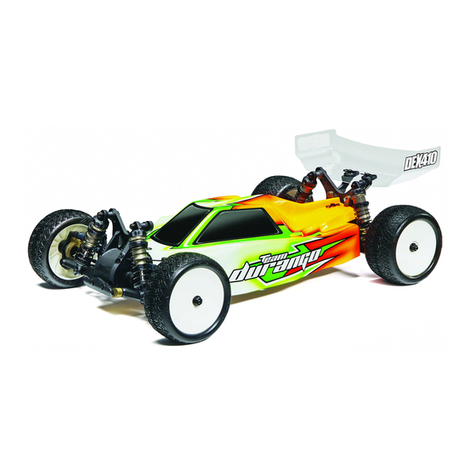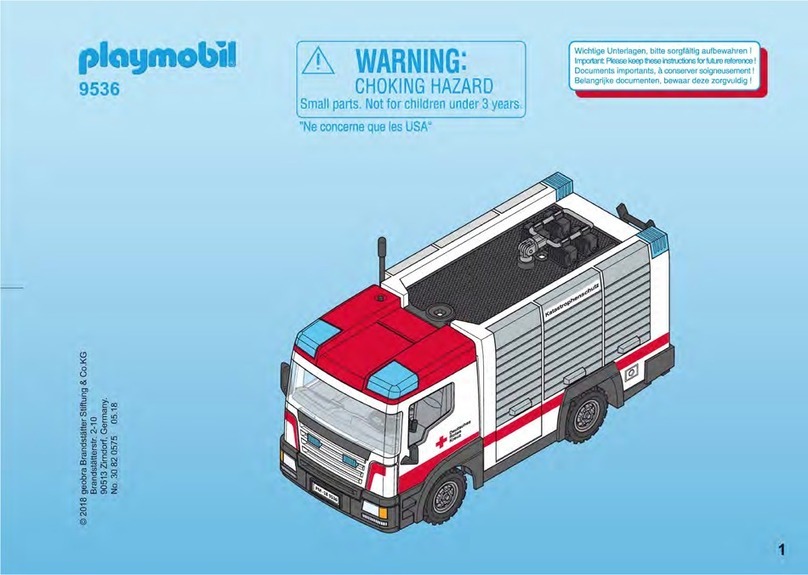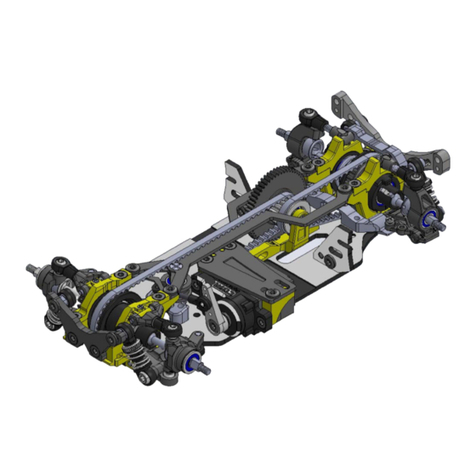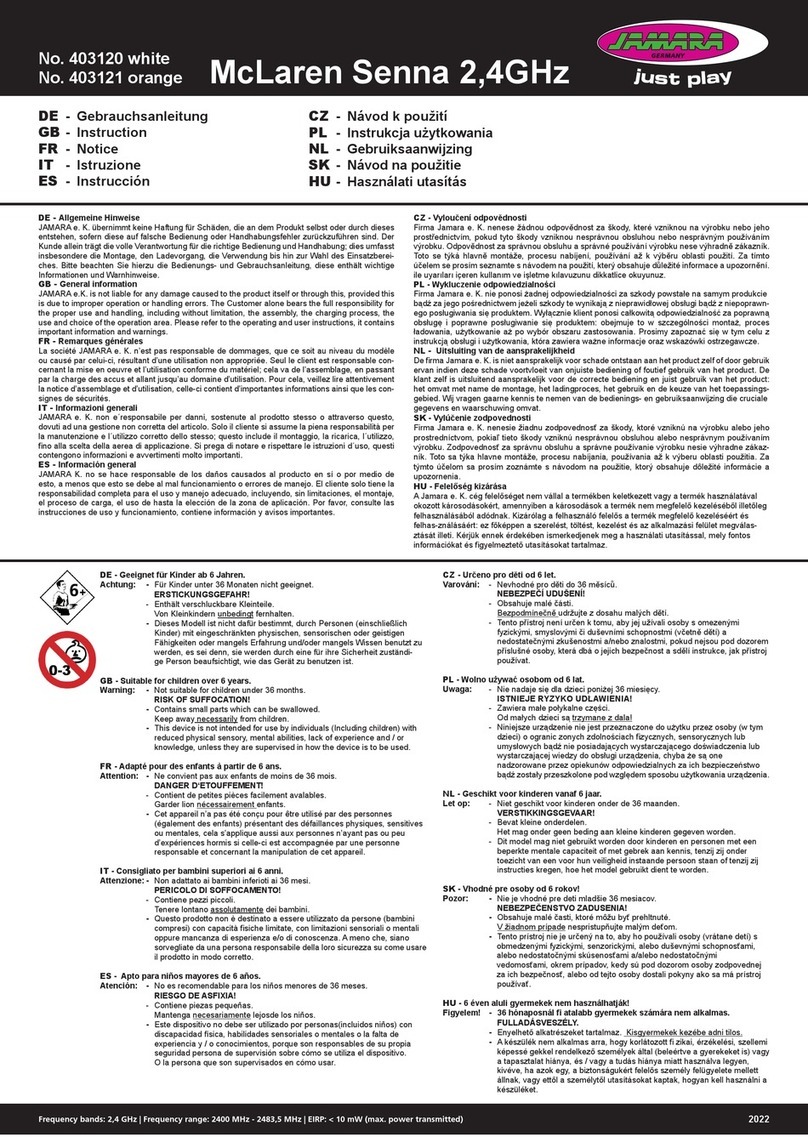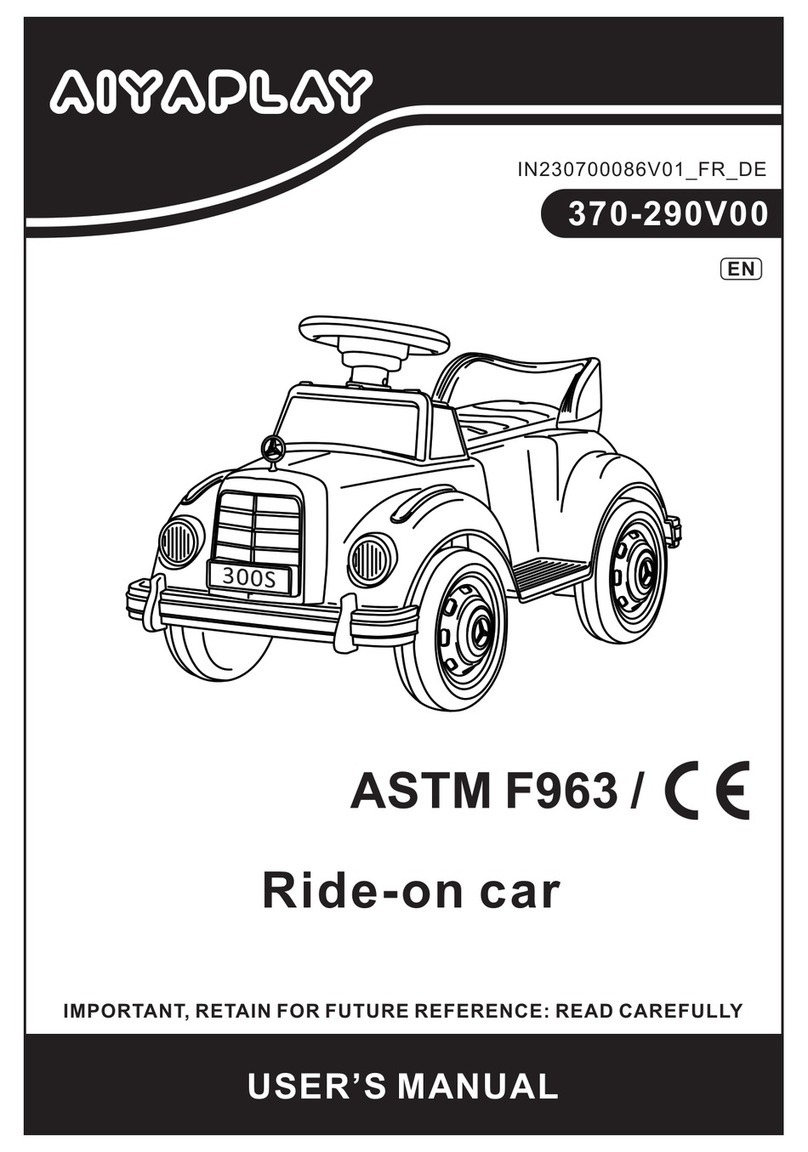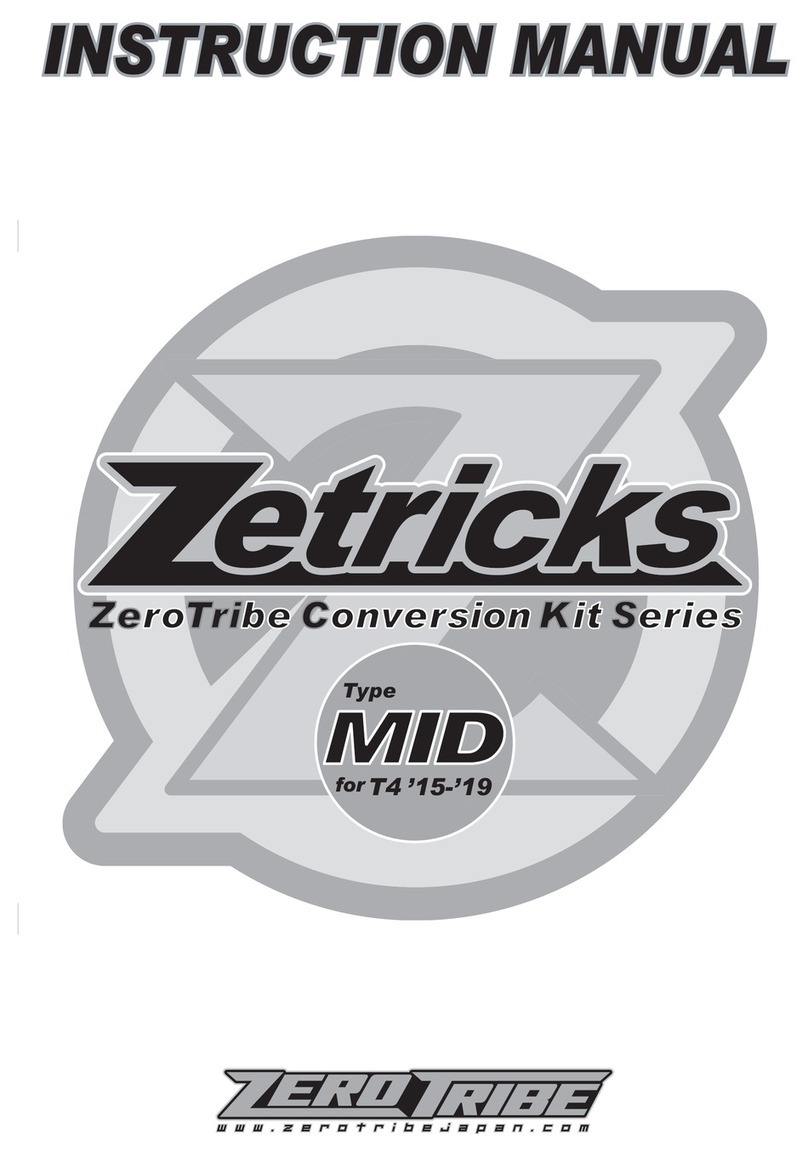
2-56 x ½” SH
Plastic Ride Height
Spacers 3, 4, 5mm
Delrin
Pivot Ball
CRC Pro-Strut
Front End
2-56 Red
Locknut
4-40 x 7/16”
Flat Head
1 - Pop the delrin pivot ball [56] into the lower arm [57]. Place the arm on a strong table and push
the ball in with the back of screwdriver handle. Or preferably, you can use CRC’s 4279 Ball popper
pivot ball tool. Notice the “lip” of the delrin pivot ball is pointing upward. The diagram to the left
represents a right side lower arm. For the left side, flip the second arm over and be sure the pivot
ball is installed with the lip again facing up.
2 - Once the ball is popped in, insert the black 2-56 clamp screw [58] through the horizontal hole in
the lower arm. Thread the 2-56 red locknut [59] onto the black screw. Tighten the screw slowly
continuously checking the pivot ball. When it begins to bind slightly, loosen the 2-56 screw a little.
The ball should be free to pivot with just a bit of drag. There is no need to have this ball super loose
and free, a slight drag will be just the right amount of clamping force.
Check this fit after a few runs as the ball will wear and require additional clamping force.
Lip
1 - Install the upper A-arm mount [60] with the amount of Dynamic Caster desired. The options are 0, 5 and 10
degrees. The part shown to the right in the diagram is the 5 degree version and is a good starting point. The
10 will angle down more toward the front of the car with the 0 being parallel to the chassis. The general
thought is the more Dynamic Caster, more steering the car will have at corner entry.
2 - With side cutters or good scissors, cut off (do NOT break off) the 3, 4 and 5 mm spacers [61] from the ride
height tree. Use the 5 mm thickness for 1/10th scale tires. For fine front ride height adjustments, use the CRC
#4262 optional front shim set. This set contains .010, .020 and .030” plastic ride height shims. After selecting
the proper spacer, push the 4-40 x 7/16” screw [62] through the plastic ride height spacer [61], then through
the lower arm [57], and then thread the screw into the upper A-arm mount [60]. Be sure NOT to over tighten.
Just snug, so you do not deform any of the plastic parts.
56
56
57
58
58
59
59
60
61
62
61
57
62
Bag F
1 - Break the mold tree from the upper A-arm [63]. You can clean up the
mold gates with a hobby knife or rotary tool.
2 - Locate the upper arm hinge pin [64] and slide it into one half of the upper
arm. Locate 3 small caster shims [65]. Push the hinge pin through the 3
shims. Then continue to push the hinge pin all the way into the upper arm.
3 - Now, install the arm/pin/washer assembly onto the upper arm mount [60].
Put the hinge pin in the channel. At this point you can set your starting
caster setting by moving these washers forward and back. The position
shown to the left will result in a competitive handling. Moving them to the
rear will increase steering from the center and exit of the corner.
If the fit of the upper arm is tight, trim the upper arm mount SLIGHTLY with a
hobby knife.
4 - Install the upper cap [66] with four 2-56 button head screws [67]. The
topper is the “clamp” for the hinge pin. Be sure to tighten so that any gap is
gone, however, do not tighten beyond that point as damage can occur to the
upper a-arm mount holes.
63 64
65
60
66
Hinge Pin
64
Caster Shim
65
2-56 BH
67
Upper Cap
66
67
8

